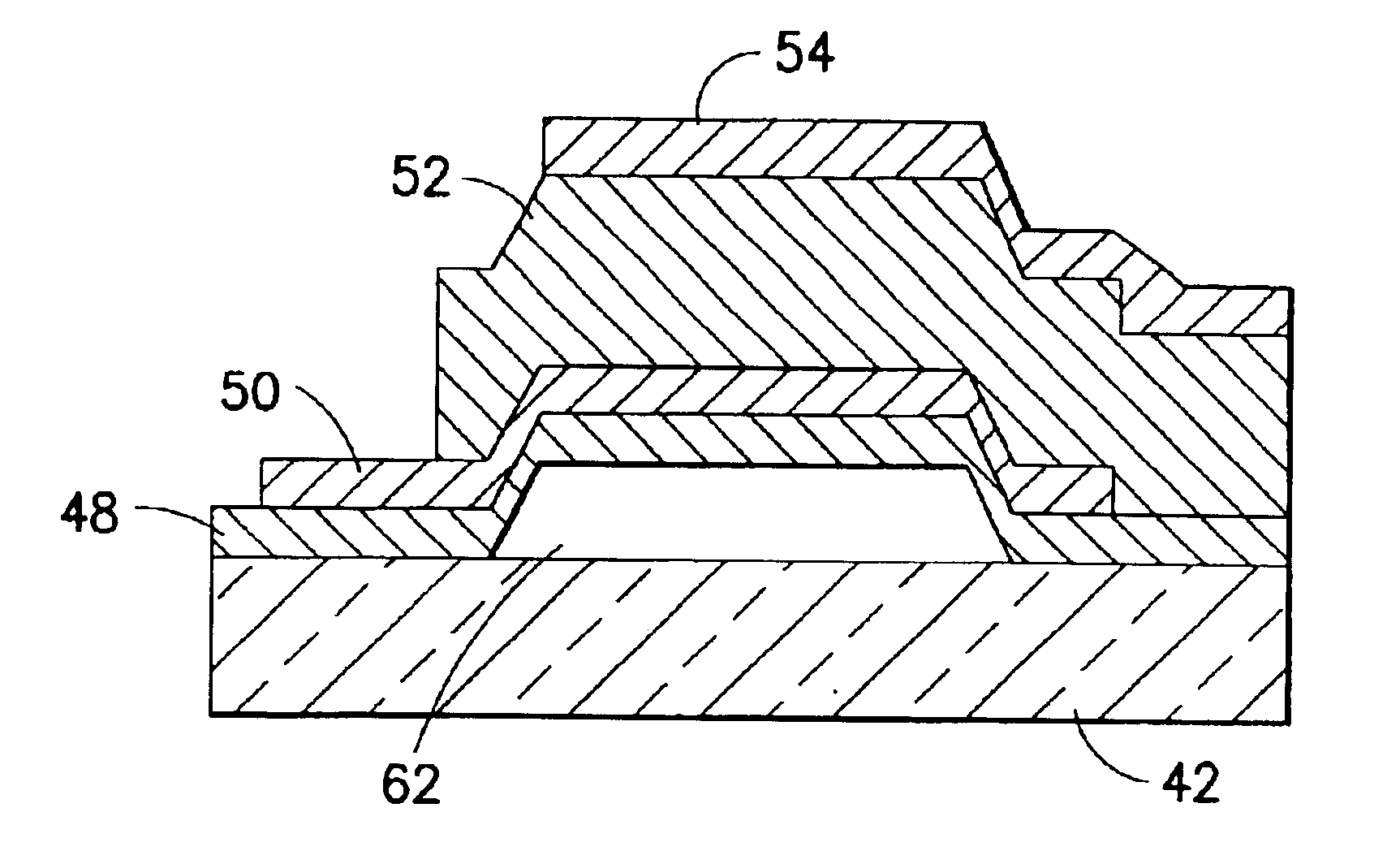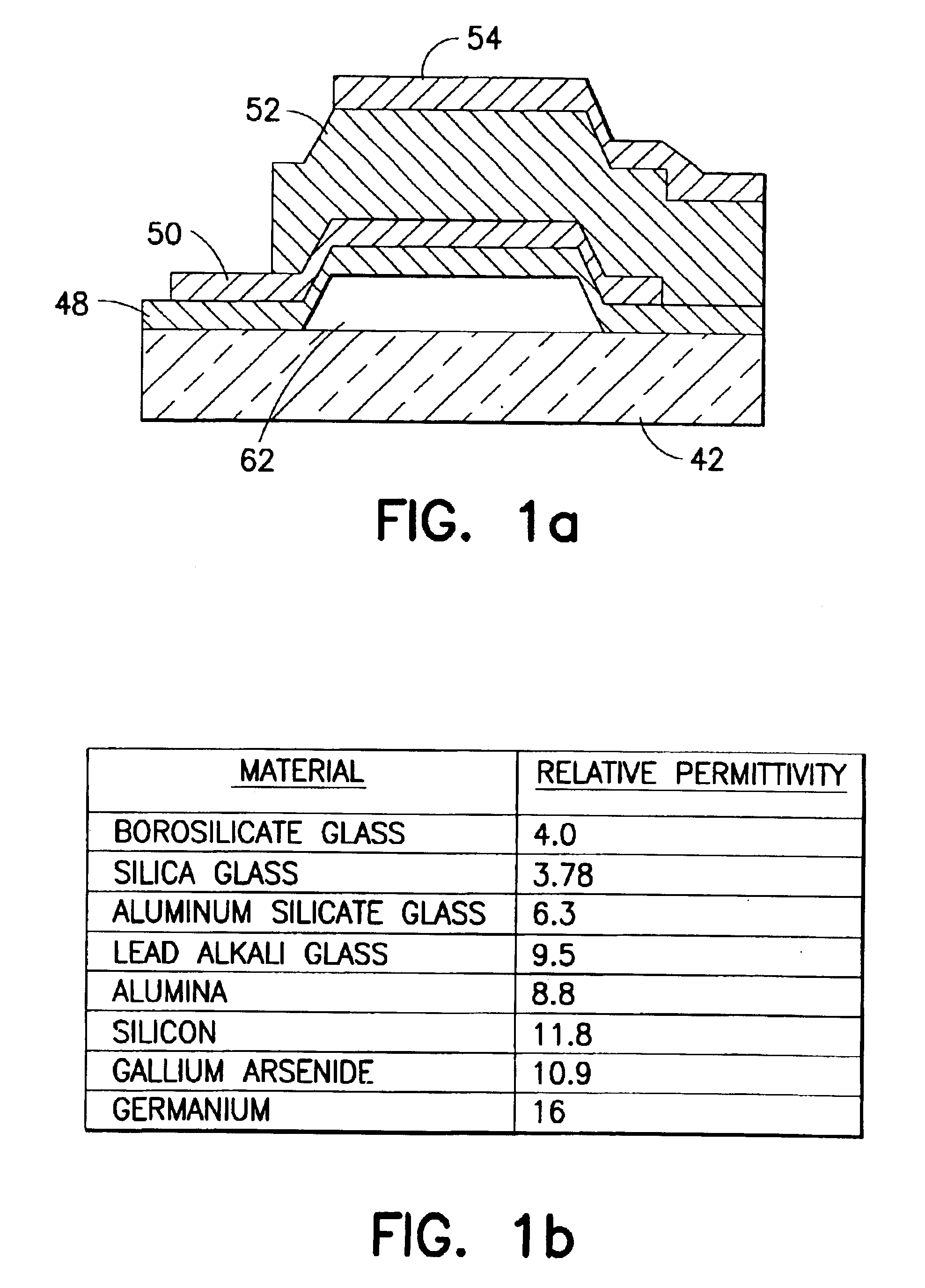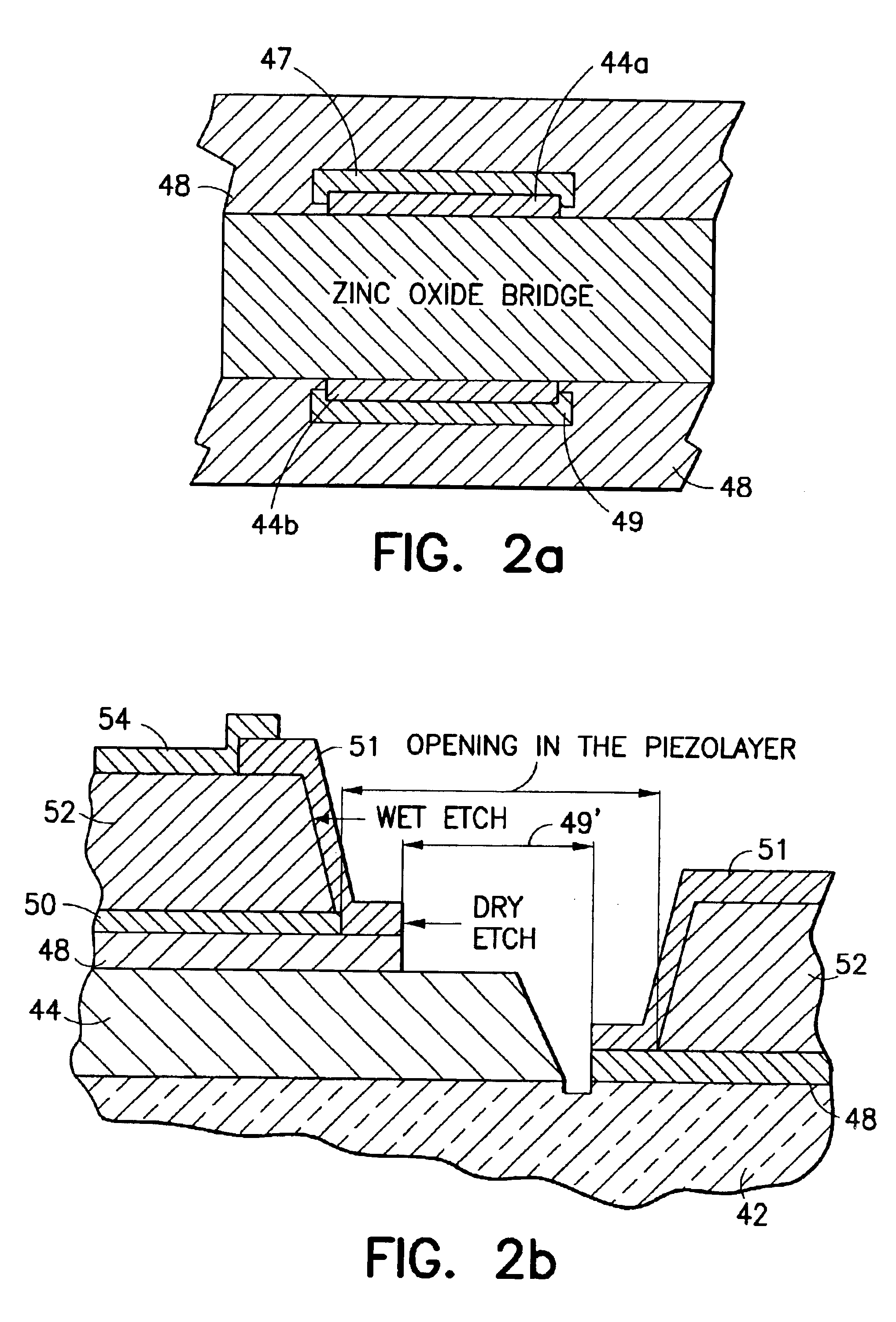Method for fabricating a thin film bulk acoustic wave resonator (FBAR) on a glass substrate
- Summary
- Abstract
- Description
- Claims
- Application Information
AI Technical Summary
Benefits of technology
Problems solved by technology
Method used
Image
Examples
Embodiment Construction
The inventors have developed an improved method for fabricating Thin Film Bulk Acoustic Wave Resonators (FBARs) having air gaps. Unlike most of the conventional methods for fabricating FBARs, which employ sacrificial layers formed of, by example, zinc-oxide (ZnO), the method of the present invention employs a sacrificial layer that is comprised of either a metal or a polymer material. The use of these materials to form sacrificial layers has many advantages over the use of ZnO to form these layers, as will be described below.
The method of fabricating FBARs in accordance with the invention can be understood in view of FIGS. 3a-5. As a first step of the fabrication process, a metal such as, by example, copper (Cu) is sputtered or otherwise deposited over a substrate 42. It is assumed that the substrate is comprised of glass, in accordance with an aspect of this invention which will be further described below, although any other suitable solid material may be employed. The sputtered Cu...
PUM
| Property | Measurement | Unit |
|---|---|---|
| Thickness | aaaaa | aaaaa |
| Thickness | aaaaa | aaaaa |
| Thickness | aaaaa | aaaaa |
Abstract
Description
Claims
Application Information
 Login to View More
Login to View More - R&D
- Intellectual Property
- Life Sciences
- Materials
- Tech Scout
- Unparalleled Data Quality
- Higher Quality Content
- 60% Fewer Hallucinations
Browse by: Latest US Patents, China's latest patents, Technical Efficacy Thesaurus, Application Domain, Technology Topic, Popular Technical Reports.
© 2025 PatSnap. All rights reserved.Legal|Privacy policy|Modern Slavery Act Transparency Statement|Sitemap|About US| Contact US: help@patsnap.com



